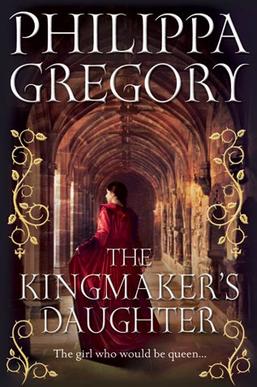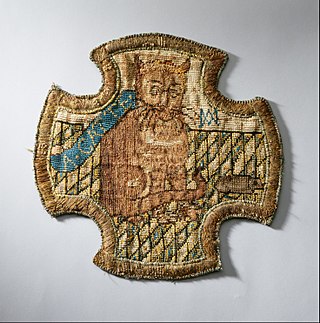
Elizabeth Cavendish, later Elizabeth Talbot, Countess of Shrewsbury, known as Bess of Hardwick, of Hardwick Hall, Derbyshire, was a notable figure of Elizabethan English society. By a series of well-made marriages, she rose to the highest levels of English nobility and became enormously wealthy. Bess was reportedly a shrewd businesswoman, increasing her assets with business interests including mines and glass-making workshops.

Lady Arbella Stuart was an English noblewoman who was considered a possible successor to Queen Elizabeth I of England. During the reign of King James VI and I, she married William Seymour, 2nd Duke of Somerset, another claimant to the English throne, in secret. King James imprisoned William Seymour and placed her under house arrest. When she and her husband tried to escape England, she was captured and imprisoned in the Tower of London, where she died at age 39.

Sheffield Manor Lodge, also known as Sheffield Manor or locally as Manor Castle, is a lodge built about 1516 in what then was a large deer park southeast of Sheffield, South Yorkshire, England, to provide a country retreat and further accommodate George Talbot, the 4th Earl of Shrewsbury, and his large family. The remnant of this estate is now known as Norfolk Park. The housing estate of Manor is named after Sheffield Manor Lodge.

Henry Hastings, 3rd Earl of Huntingdon, KG, KB was an English Puritan nobleman. Educated alongside the future Edward VI, he was briefly imprisoned by Mary I, and later considered by some as a potential successor to Elizabeth I. He hotly opposed the scheme to marry Mary, Queen of Scots, to the Duke of Norfolk, and was entrusted by Elizabeth to see that the Scottish queen did not escape at the time of the threatened uprising in 1569. He served as President of the Council of the North from 1572 until his death in 1595.

George Talbot, 6th Earl of Shrewsbury, 6th Earl of Waterford, 12th Baron Talbot, KG, Earl Marshal (c. 1522/1528 – 18 November 1590) was an English magnate and military commander. He also held the subsidiary titles of 15th Baron Strange of Blackmere and 11th Baron Furnivall. He was best known for his tenure as keeper of Mary, Queen of Scots between 1568 and 1585, his marriage to his second wife Elizabeth Talbot, as well as his surviving collection of written work.

Mary Stuart is a verse play by Friedrich Schiller that depicts the last days of Mary, Queen of Scots. The play consists of five acts, each divided into several scenes. The play had its première in Weimar, Germany on 14 June 1800. The play formed the basis for Donizetti's opera Maria Stuarda (1835).
Elizabeth Stuart, Countess of Lennox née Cavendish was an English noblewoman and the wife of Charles Stuart, 1st Earl of Lennox. She was the mother of Arbella Stuart, a close relation to the English and Scottish thrones.

Gilbert Talbot, 7th Earl of Shrewsbury, 7th Earl of Waterford, 13th Baron Talbot, KG, styled Lord Talbot from 1582 to 1590, was a peer in the peerage of England. He also held the subsidiary titles of 16th Baron Strange of Blackmere and 12th Baron Furnivall.
Mary Herbert, Countess of Pembroke was the wife of William Herbert, 3rd Earl of Pembroke.

Mary Talbot, Countess of Shrewsbury (1556–1632) was the wife of Gilbert Talbot, 7th Earl of Shrewsbury.

The Old Hall Hotel is a hotel in Buxton, Derbyshire, England, and is one of the oldest buildings in the town.

The White Queen is a 2009 historical novel by Philippa Gregory, the first of her series The Cousins' War. It tells the story of Elizabeth Woodville, queen consort of King Edward IV of England. The 2013 BBC One television series The White Queen is a 10-part adaptation of Gregory's novels The White Queen, The Red Queen (2010) and The Kingmaker's Daughter (2012), and features Rebecca Ferguson as Elizabeth Woodville.

The Kingmaker's Daughter is a 2012 historical novel by English writer Philippa Gregory, part of her series The Cousins' War. It is the story of Anne Neville, wife of Richard III of England. The 2013 BBC One television series The White Queen is a 10-part adaptation of Gregory's novels The White Queen (2009), The Red Queen (2010) and The Kingmaker's Daughter, and features Faye Marsay as Anne Neville.

The White Princess is a 2013 historical novel by Philippa Gregory, part of her series The Cousins' War. It is the story of Elizabeth of York, daughter of Edward IV of England and Elizabeth Woodville, and later wife of Henry VII and mother of Henry VIII.

The King's Curse is a 2014 historical novel by Philippa Gregory, part of her series The Cousins' War. A direct sequel to The White Princess, it follows the adult life of Margaret Pole, Countess of Salisbury, the daughter of George Plantagenet, 1st Duke of Clarence and Isabel Neville.

The Oxburgh Hangings are needlework bed hangings that are held in Oxburgh Hall in Norfolk, England, made by Mary, Queen of Scots and Bess of Hardwick, during the period of Mary's captivity in England.

Mary Queen of Scots is a 2018 historical drama film directed by Josie Rourke and with a screenplay by Beau Willimon based on John Guy's 2004 biography Queen of Scots: The True Life of Mary Stuart. The film stars Saoirse Ronan as Mary, Queen of Scots, and Margot Robbie as her paternal first cousin once removed Queen Elizabeth I. Jack Lowden, Joe Alwyn, David Tennant, and Guy Pearce also star in supporting roles.

Sir Henry Hardwick Cavendish (1550–1616) was the eldest son of the Tudor courtier Sir William Cavendish, and Lady Elizabeth Talbot, Countess of Shrewsbury, known as "Bess of Hardwick". A Knight of the Shire for Derbyshire, he offered military service to Queen Elizabeth in the Netherlands as a Captain in 1578; conducted several trade expeditions across Europe and into the Islamic Near East (Constantinople); served as High Sheriff of Derbyshire twice and was elected as Member of Parliament for Derbyshire five times.
Lady Gertrude Talbot, Countess of Shrewsbury, formerly Gertrude Manners, was an English noblewoman of the Elizabethan period.

Sir Charles Cavendish was an English landowner. He was a son of Bess of Hardwick and William Cavendish (1505–1557).

















